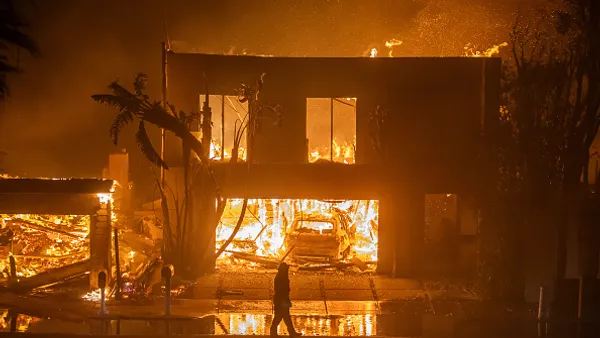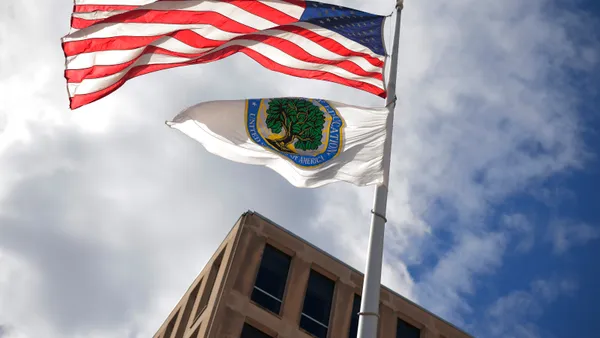Dive Brief:
- Nearly 1.5 million high school seniors have submitted a Free Application for Federal Student Aid through late March, a 27.1% decline compared to the same time last year, according to an analysis from the National College Attainment Network.
- But FAFSA submissions don’t represent the whole story, as they include applications that have errors that need to be corrected. FAFSA completions — those that have been processed by the U.S. Department of Education — are down a whopping 40% for high school seniors through March 29 compared to the year before, NCAN found.
- The figures come during a fraught financial aid cycle. The Education Department released a revamped version of the FAFSA, but the rollout has been marked by delays and technical glitches that have prevented students from completing the form.
Dive Insight:
Concerns are mounting that the bumpy release of the new FAFSA form may result in fewer students opting for higher education. Late last month, NCAN warned that the dip in FAFSA submissions could lead to a “catastrophic drop in college enrollment this fall.”
Bill DeBaun, NCAN’s senior director of data and strategic initiatives, echoed those concerns last week.
This aid cycle could have larger FAFSA completion declines than were seen during the pandemic, DeBaun said. “This could have really horrible impacts on postsecondary enrollment this fall,” he added.
The gap between submissions and completions is expected to narrow, according to NCAN’s latest blog post. The Education Department recently announced that students and their families would be able to correct FAFSA forms in the first half of April.
Still, the rate of submissions is concerning to higher education experts.
“The fact that FAFSA submissions are down 27% year over year — that is still larger than any decline that I have seen in previous years,” DeBaun said. “By both measures, we are in a lot of trouble right now.”
DeBaun said that NCAN has been encouraging colleges to push back key dates — including student commitment deadlines — as much as possible. Policies allowing refundable deposits are another student-friendly option, he said.
At the same time, DeBaun acknowledged that institutions need to plan for matters like housing and course schedules.
The organization has also been urging lawmakers to encourage students to complete the FAFSA and focus resources on outreach.
“There's going to be a long tail of students who need FAFSA completion support well into the summer after high school graduation,” DeBaun said. Money will be needed to pay for staff to be on call to assist students and their families with FAFSA completion over the summer.
The Education Department is under fire for its rollout of the revamped FAFSA, which pares down the number of questions students and their families must answer from over 100 to just a few dozen.
Although the form is usually released in October, the agency didn’t make it available until late December. The agency also didn’t start transmitting FAFSA data to colleges until mid-March, sharply reducing the time colleges have to assemble financial aid packages for prospective students.
But those haven’t been the only challenges. Most recently, the Education Department announced that it would reprocess between 15% to 20% of already submitted FAFSAs due to tax miscalculations. As of April 5, the Education Department had processed 6.9 million FAFSAs.
The hangups have attracted the attention of the House Committee on Education and the Workforce, which plans to hold a hearing this week over the Education Department’s rollout of the FAFSA.
“The Education Department’s FAFSA rollout has been defined by poor communication, negligence, and incompetence that has wreaked havoc on the entire university system,” Rep. Burgess Owens, a Utah Republican who chairs the higher education subcommittee, said in a statement announcing the hearing. “FAFSA delays have left millions of students in limbo, unsure of their academic futures and unable to access additional guidance or assistance.”














